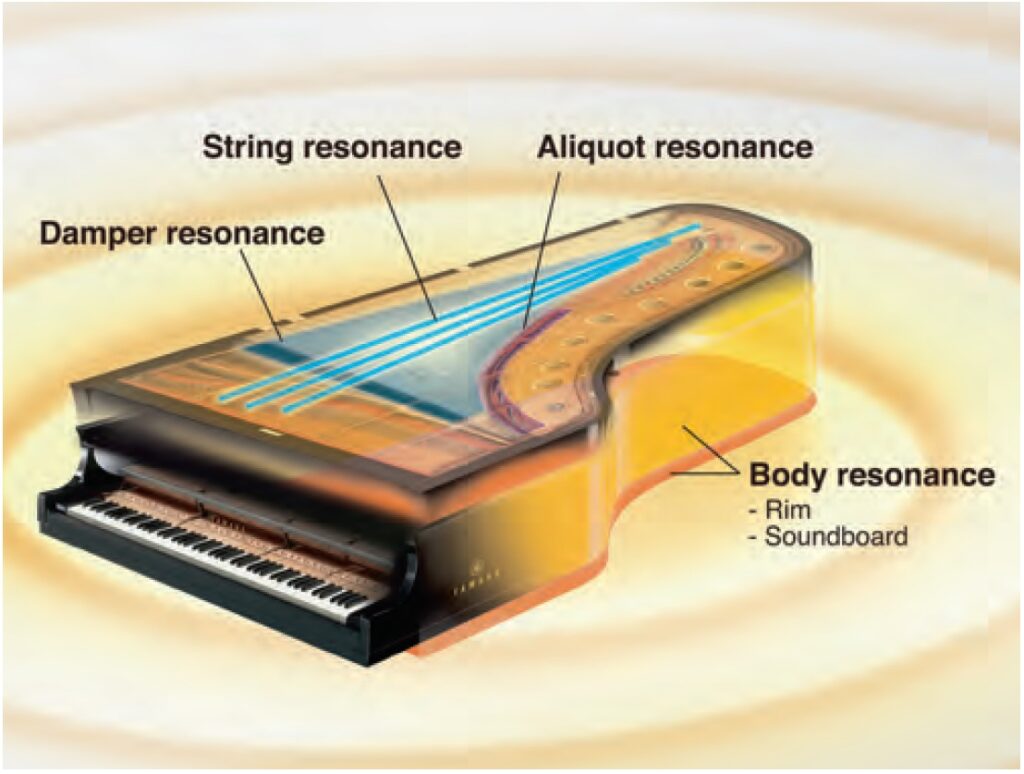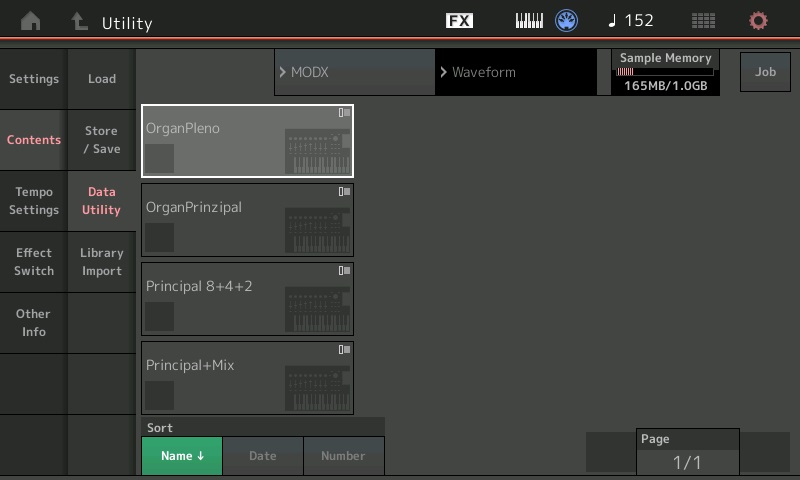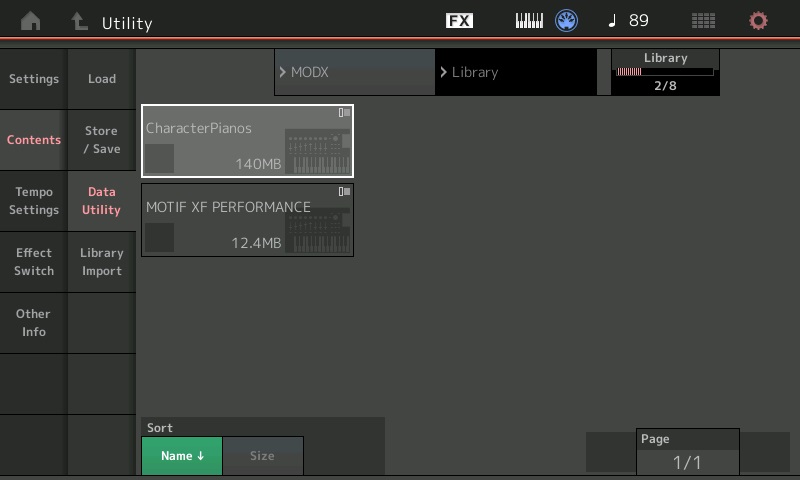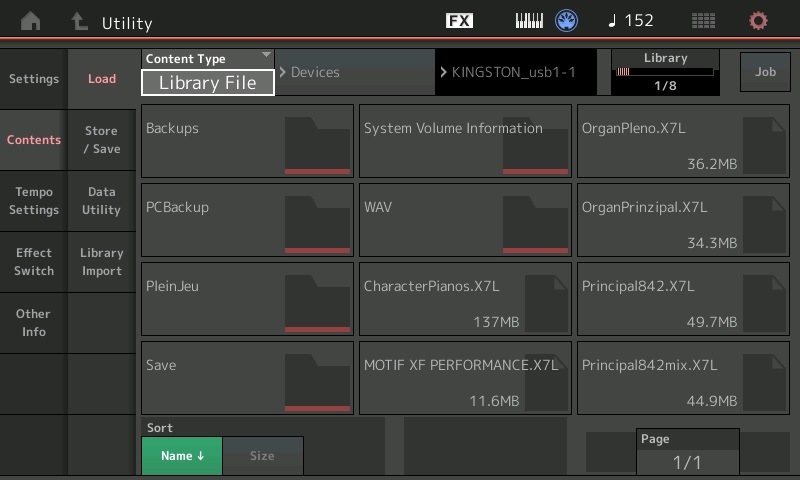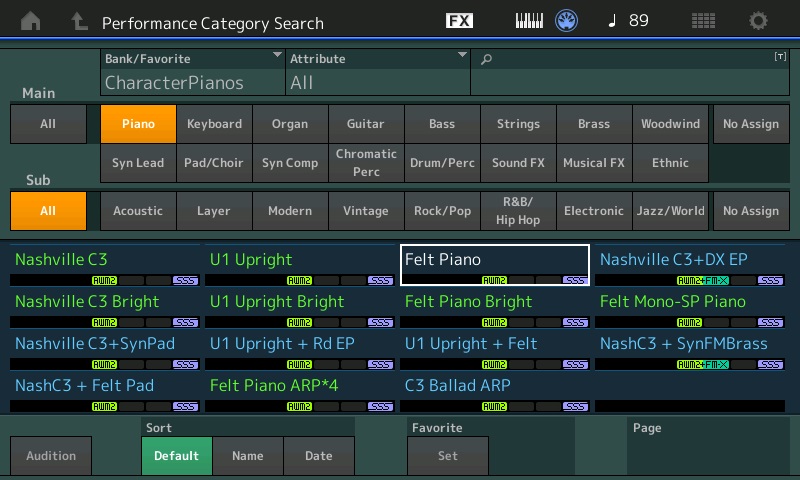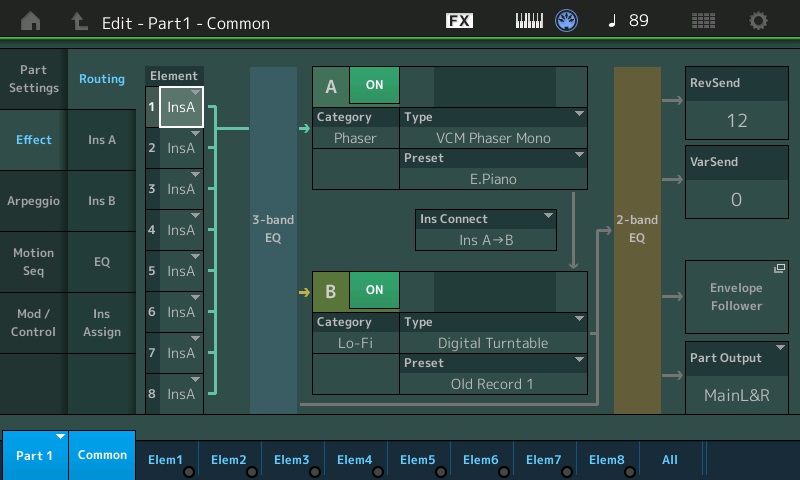Virtual Resonance Modeling (VRM) is one of one of Yamaha’s strongest differentiating technologies. Many of Yamaha’s home and portable digital pianos implement some form of VRM. Up to this point, the CP series stage pianos and other products in the synthesizer (music production) product families do not have VRM. Perhaps this will change in CP Gen 2. Yamaha arranger keyboards do not feature VRM, either. [Some synths and arrangers have a damper resonance insert effect. See “Synthetic fun” below.]
Sampled piano can sound lifeless even when the damper pedal is depressed. VRM adds a subtle dynamic quality to the overall sound. I tried turning VRM off via Piano Room while holding down notes with the damper pedal applied. There is a subtle difference in the sound. With VRM on, the overall tone (such as the P-515 or DGX-670) is fuller, more dynamic. Personally, I find the effect pleasing enough to regard it as a “must have” feature.
In slightly more technical terms, VRM adds sympathetic resonances such that the piano tone grows (blooms) over the duration of the notes. Acoustic piano makers and technicians go to great lengths to add and tune pleasing harmonics through resonance. Acoustic pianos are incredibly complex machines in the scientific sense!
You’ve probably read Yamaha’s description of VRM on its web site or in an owner’s manual. If you’re unsure of what it all means, then I recommend doing the same experiment yourself and hearing the difference. [Get thee to a dealer.] Whether you like the effect (or not) is personal. If it doesn’t immediately strike your fancy, please read on. Some models let you tweak VRM depth in Piano Room.
VRM technology has evolved since its introduction in 2014. The first models with VRM were the up-scale CLP 575 and 585. Per usual Yamaha practice, VRM trickled out to lower-end models in the 600 series and to the CSP and CVP series. Another thing happened, too. Yamaha began referring to “original VRM” and “enhanced VRM”. Yamaha describes original and enhanced VRM in the following way:
The original VRM (CSP-150/170) calculates the various states of the strings for each of the 88 notes on the keyboard, from one instant to the next, and timing and depth of damper pedals pressed.
Enhanced VRM (CLP-635 / 645 / 675 / 685 / 665GP / 695GP) now also calculates aliquot resonance in the upper octaves, and the full resonance of the soundboard, rim, and frame.
The calculations require some heavy mathematics and are computational intensive. I’ll say more about this in a future post. I will say, now, that VRM is a substantial, technological achievment!
Lately, Yamaha have dropped “original” and “enhanced” in favor of “VRM Lite” and “VRM”. I contacted Yamaha support asking about the specific modeling components supported by VRM and VRM Lite. They replied:
- VRM has five components in it:
- Damper resonance
- String resonance
- Body resonance
- Duplex scale resonance
- Damper noise
- VRM Lite has two components:
- Damper resonance
- String resonance
As you would expect, VRM Lite is a subset of VRM. I preseume “duplex scale resonance” means Aliquot resonance although technically the two are related, but not identical.
If your Yamaha digital piano has VRM or VRM Lite, you’ll have one or more VRM-related settings at your disposal in Piano Room and/or the Smart Pianist app. The DGX-670, for example, has three settings:
- VRM effect ON/OFF
- Damper resonance effect depth
- String resonance effect depth
Thus, you can ditch VRM entirely, or individually control the amount of damper or string resonance. The latter two settings let you dial in the amount of each effect to suit your preference. P-515 (enhanced VRM) provides five settings:
- VRM effect ON/OFF
- Damper resonance effect depth
- String resonance effect depth
- Aliquot resonance effect depth
- Body resonance effect depth
Special thanks to Dan (Yamaha Support) who chased down this information for me.
Synthetic fun
Yamaha Montage/MODX, Genos, and other Yamaha synths implement a Damper Resonance effect “that reproduces the rich harmonics and unique sound characteristics of an actual grand piano when using the damper pedal.” [Check the Data List PDF for your particular model.] The Damper Resonance effect depends upon the sustain pedal (Damper Control) — you must depress the sustain (damper) pedal to hear the effect.
For Montage/MODX cheap thrills, select the four-part “CFX Concert” Performance. All four parts assign Damper Resonance to insert effect A. The initial dry/wet balance is set to D21>W or thereabouts. Raise the dry/wet balance to D<W63 — full wet. Now when you strike a note and depress the damper pedal, you’ll hear only the sound of the damper resonance effect.
For further background information about the Damper Resonance effect, check out Half Damper Function, Damper Resonance Effect and Key Off Sample (Motif XF).
Copyright © 2023 Paul J. Drongowski
Here are my working definitions for Aliquot resonance and duplex scaling.
“Aliquot is a stringing method for pianos that uses extra, un-struck strings in the upper octaves to enhance the tone. These strings sympathetically vibrate with other strings in an acoustic piano, resonating with overtones, and adding richness, brilliance and complex color to the sound. Since they do not have a damper, they will continue sounding even after you release your hands from the keyboard.” [Source: Yamaha P-515 Owner’s Manual]
“Duplex scaling, built into some grand pianos, can be found on that portion of the string in the treble section between the back bridge pin and the hitch pin which is normally the non-speaking part of the string and dampened with a strip of cloth. Where there is duplex scaling this section is deliberately left open to resonate in sympathy with the speaking part of the string and add brightness to the upper partials.” [Source: Cambridge Piano Tuner]
These two Yamaha videos are still informative after 13 years: Stereo Sustain Samples and String Resonance.

